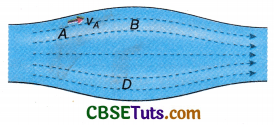The next layer is in contact with the moving layer since there is internal friction between the two layers, it also accelerates, and so on through the depth of the fluid. The layer of fluid in contact with the moving plate is accelerated and starts to move due to the internal friction between moving plate and the fluid. In the diagram, the fluid is initially at rest. Fluids have zero shear strength, but the rate at which they are sheared is related to the same geometrical factors A and L as is shear deformation for solids. The motion in the figure is like a continuous shearing motion. Care is taken to ensure that the flow is laminar, that is, the layers do not mix. Drilling fluids typically have viscosities that are fractions of a Poise, so that the derived unit, the centipoise (cP), is normally used, where 1 cP 0.01 P 1 mPa-sec. Each successive layer from the top down exerts a force on the one below it, trying to drag it along, producing a continuous variation in speed from v to 0 as shown. The traditional unit for viscosity is the Poise (P), or 0.1 Pa-sec (also 1 dyne-sec/cm2), where Pa Pascal. The layer (or lamina) of fluid in contact with either plate does not move relative to the plate, so the top layer moves at speed v while the bottom layer remains at rest. The bottom plate is held fixed, while the top plate is moved to the right, dragging fluid with it. The fluid to be measured is placed between two parallel plates.
\) shows how viscosity is measured for a fluid.


